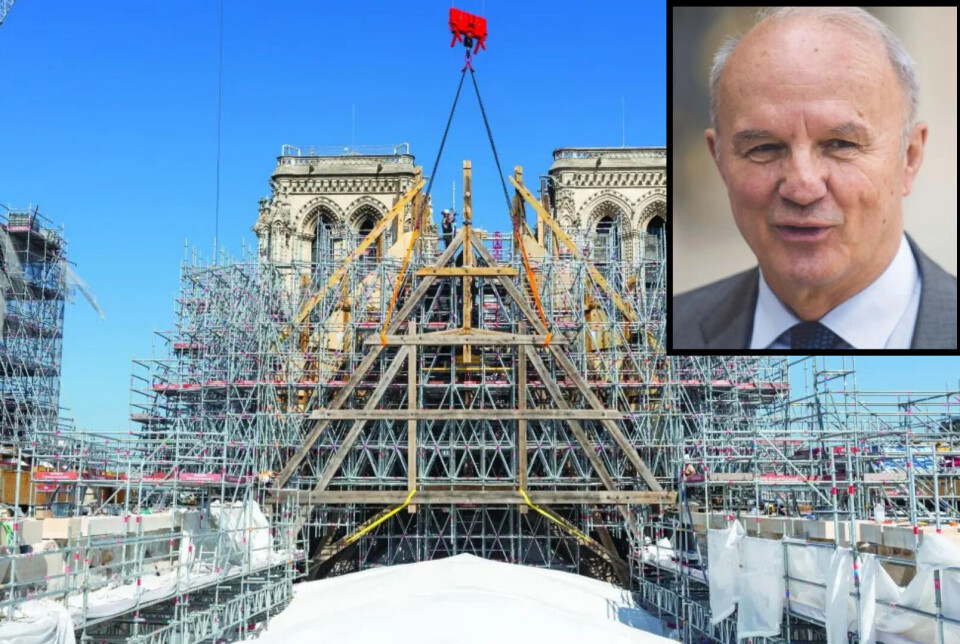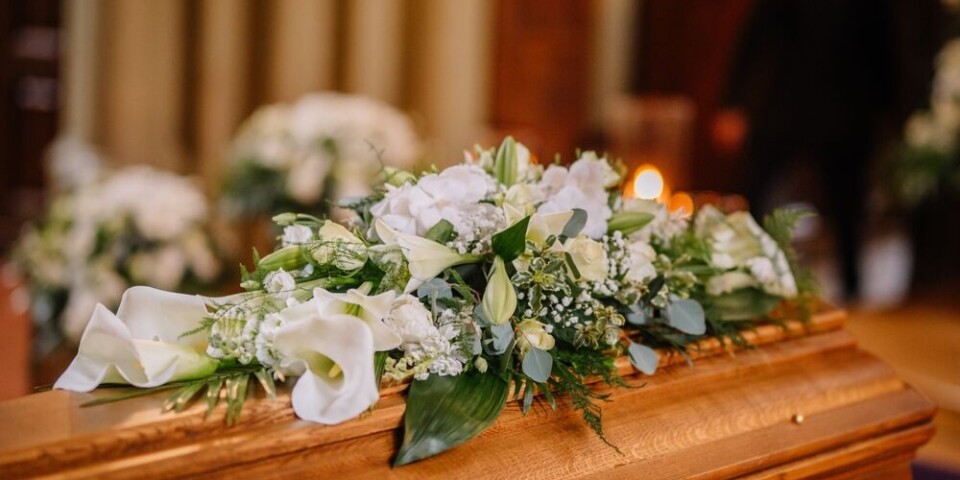-
La Baule is a classic French case study in the evolution of the grand resort
The coastal town renowned for its Belle Epoque villas, Art Deco elegance, and modernist designs, attracts tourists and remote workers alike
-
Renovation of Espaces d’Abraxas: A Parisian architectural icon reborn
The €16.3 million renovation in Noisy-Le-Grand will transform this neo-classical landmark with upgraded apartments and green spaces
-
Inside Coco Chanel’s avant-garde Riviera villa
Explore the unique design and history of Coco Chanel's Riviera villa, La Pausa, featuring innovative architecture and modern facilities that reflect her vision of luxury and functionality
'France will win Notre-Dame rebuild challenge', says general in charge
We spoke to the project chief, former general Jean-Louis Georgelin, before his death in August 2023

On April 15, 2019, people in France and around the world held their breath as Notre-Dame cathedral in Paris went up in flames.
Trending
Former army general Jean-Louis Georgelin was the man chosen to oversee the cathedral’s mammoth restoration project, coordinating the worlds of religion, politics and culture, just two days after the night of the fire.
However, in August 2023 the 74-year-old former general died in a hiking accident in the Pyrenees.
President Macron led the tributes, calling General Georgelin "one of the great stewards of France" and the "chief orchestrator of the rebirth [of Notre-Dame cathedral]
In June 2023, General Georgelin spoke to The Connexion on the challenge of rebuilding Notre-Dame, which is scheduled to reopen on Sunday (December 8).
A military man to deliver Macron’s five year deadline
A former chief of staff to President Chirac, General Georgelin was also chief of France's defence staff from 2006 to 2010. Did this mission require a military man?
“You will have to ask the president,” General Georgelin said with a smile.
He said Emmanuel Macron had three conditions for the position.
“It had to be a Catholic; it had to be someone who had worked at the highest levels of the state; and someone who knows how to show authority.”
President Macron set an ambitious deadline of five years for the rebuilding, a target the restoration team is proudly on track to meet.
€846million rebuild cost covered by donations
General Georgelin admitted the team had to surmount multiple challenges, presented by French legislation and its many codes governing national monuments, as well as employment and public contracts – and all while balancing the interests of the different bodies involved.
“My office at the Elysée Palace has been an important tool to demonstrate the president’s support,” he said, referencing the audacious timeline.
One help was that the project was fully financed in advance with a number of major French fortunes committing €500million within days of the blaze.
The necessary €846million was soon covered, thanks to 340,000 donors from 150 countries.
The reconstruction was a huge task.
Read more: €50million Notre-Dame Cathedral landscaping project approved in Paris
Lead poisoning concerns mean strict safety procedures
General Georgelin said he had to count on around 40 people working for the public organisation created to oversee the rebuild, and a total of 1,000 workers throughout France, half of whom were on site – although conditions were complicated due to the presence of lead.
The requirements for watertight clothing and systematic showers when leaving the site, even for visitors, were particularly stringent.
He confided that King Charles III had wanted to visit the site, but it did not make the programme of his visit due to these safety complications.
‘A few tears’ as keystones installed
Construction on Notre-Dame began in 1163, and the cathedral has played an important role in French history and identity ever since.
General Georgelin laughed as he pointed out that only one king of France was crowned there, in 1431 – the highly disputed Englishman Henry VI, at the height of the Hundred Years’ War.
The kings of France were traditionally crowned at Reims Cathedral.
In the Middle Ages, as with many French cathedrals, elements of the façade were painted in different colours, but General Georgelin says there are no plans to return it to its former look.
Inside, however, many of the frescoes and decorations have been restored to their original colours, as have the stained-glass windows.
He recalled certain crucial stages in the reconstruction, particularly the installation of the keystones, which aroused strong emotions, and “a few tears”.
He also shared that his regret at not having been able to meet Ken Follett because of Covid.
The Welsh author wrote a book on Notre-Dame in 2019, and his royalties paid to the Fondation du Patrimoine for the Paris cathedral were redirected, with his approval, to the restoration of Saint-Samson in Dol-de-Bretagne, founded by a Welshman like himself.
Read more: Ken Follett visits Brittany cathedral he is helping to restore
Due to reopen to the public in December 2024
“Everyone remembers what they were doing when the cathedral burned down," said General Georgelin.
“Believers of all religions, lay people, the whole world was moved by emotion.”
While he died over a year before the job was finished, General Georgelin will be forever remembered for the role he played in Notre-Dame's reconstruction.
In December 2023, President Macron announced that the former general had been honoured with a special engraving "to commemorate the decisive role that this great servant of the state played in managing the project.”
General Georgelin spoke to The Connexion ahead of a conference organised by the Monaco Méditerranée Foundation in Monaco in June 2023.
Related articles
Notre-Dame fire: What is France doing to protect its other cathedrals?
Notre Dame fire: New cause investigated as 2024 service date confirmed
French language defenders sue Notre-Dame over English translations































